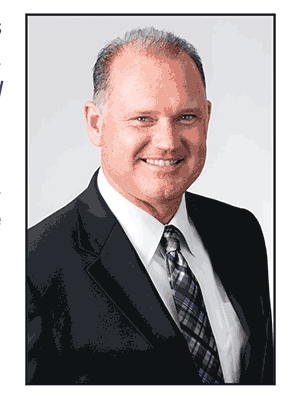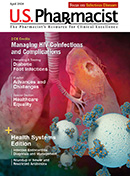US Pharm. 2017;42(12):28.

Brian Nightengale,
President, Good Neighbor Pharmacy
In October at the National Community Pharmacists Association (NCPA) 2017 Annual Convention in Orlando, U.S. Pharmacist spoke with Brian Nightengale, President of Good Neighbor Pharmacy. In a wide-ranging interview, he offered his insights about the opportunities for buying and selling community pharmacies in the current business climate, provider status, prescribing, potential changes to the reimbursement model, and much more.
Q: What makes independent pharmacies uniquely positioned to provide care in their communities?
A: It starts with the focus on the patient. There’s a big difference between a consumer and a patient when they’re seeking healthcare. Patients are seeking personalized care and that attention that the pharmacist provides. I think that’s the start of that unique position in healthcare. When you look at the healthcare needs and the statistics and dynamics that are facing us, there are predictions from the American Medical Association that over the next 10 to 15 years, we’re going to have a shortage of physicians of nearly 100,000.
If you think about the need for accessible, community-based care, the pharmacist is uniquely positioned. Ninety percent of the United States population is within 5 miles of a community pharmacy. The independents, because they have more time to give to that patient, are uniquely positioned to fill the gap coming with that physician shortage. From a training perspective, they are educated to be able to provide a really high level of care in the community.
Q: What do you think the independent landscape will look like in 5 years?
A: Independent pharmacy has been a staple in the community for years. Over the past 8 years or so, independent pharmacies have stabilized at around 22,000 by the NCPA’s estimates. I think that we’re at an inflection point for community-based pharmacy and, in particular, for independents, because reimbursements are getting much more challenging. The regimens for patients with specialty medications and biologics are getting more complex.
Between that complexity, shrinking reimbursement, challenge around access to the patient through narrow networks, and continued competition from mail-order and other places, it’s tough. Because of the ability to be able to provide that community with high-quality, community-based care, we’re uniquely positioned, but there’s going to be a need to transform. Part of that transformation over the next 5 years is going to require more dedicated focus on provider status. There’s a lot of legislation going on now to try to gain provider status for community pharmacists so that they can be adequately reimbursed for services provided under Medicare Part B.
There’s also a lot of movement around sustaining the scope of practice and prescribing authority for pharmacists in certain therapeutic areas. Over the next 5 years, you’re going to see provider status happen. This allows pharmacists to provide more direct care in the community, especially in underserved areas. Third, which is the big requirement and hopefully will come to fruition over the next 5 or 10 years, is a shift in the payment model. For the most part, independent pharmacies’ profitability (and pharmacies in general) is tied to prescriptions. That reimbursement is shrinking, and costs are going up.
A community-based enhanced pharmacy services network would separate out a reimbursement and payment model that’s based on outcomes and the care provided by the community pharmacist. We would like a dual reimbursement path, one of which can be risk and quality based on which pharmacists are paid for outcomes versus activities. If those outcomes don’t happen, then the payment isn’t there.
Q: When should independent pharmacy owners begin to think about exit planning?
A: There’s a pretty large population of pharmacists who are nearing retirement age, and there’s a growing interest among the younger demographic in pharmacy ownership. It’s a different mindset, and they have different needs. I think there’s going to be a big opportunity for a lot of transitions over the next 5 to 10 years.
It’s important for a current owner to start early. We don’t want to get into a situation in which the pharmacy owner has to sell because he or she doesn’t have a choice. I think early planning is critical. You need data. You need expertise. You need confidentiality. And you need a trusted partner to do that. Going it alone is a challenge, because it is an emotional decision. Once that decision is made, you want it to happen fast. Oftentimes, however, you’re not ready for that because you haven’t optimized the financials of your business so that you can get the best price.
You need that confidentiality to plan, especially if you’re interested in maintaining your legacy within your community. You need a buyer who is a cultural and value-based fit, and who is going to continue that legacy. Most importantly, it’s vital to have your business operating at its top financial metrics.
Q: In today’s evolving market, what opportunities exist for potential buyers and sellers?
A: There is going to be a lot of interest in this market over the next 5 years. The opportunity is there in the right communities to either start a new pharmacy in underserved areas or acquire one that may need upgrading and the fresh thinking of a new owner.
One of the things that we’re doing with our customers is helping them understand the demographics and dynamics of a community. Who are the key prescribers? What kind of market share and relationship does that pharmacy have with those key prescribers? What are the key trends in terms of acute and chronic disease needs of that community? This enables us to tailor a pharmacy’s clinical focus, prescriber base, and patient base to create a unique value proposition and a key source of care in that community. If you bring in the data, the network, and the support, there’s a lot of opportunity for independents to grow in certain communities. It’s also important to know where not to go. You don’t want to move into a market where a pharmacy can’t thrive.
Q: What are the features and benefits of the Pharmacy Ownership Program for sellers and for buyers?
A: We’re not a brokerage. We have a network of interested buyers, and we continually foster that network. We also have a network of customers whom we engage in those early conversations. We have conversations such as, “Have you thought about your transition strategy, your exit strategy?” Sometimes they say, “No, I really haven’t.” So, we’ll start that conversation.
Confidentiality is key, so we have a team of experts that have been buying and selling pharmacies for years. Again, our employees don’t charge a fee for this. It’s a no-risk situation since they’re our customers. There’s already a trust there because oftentimes, the owner doesn’t necessarily want the staff to know that those conversations are going on. There’s also a trust with the data. We can sit down with them early on and give them an honest, data-driven estimate of what their pharmacy is worth. They can set those expectations early in a trusted and comfortable environment.
The expertise, data, knowledge, and trust are all key. I’m very proud of our Pharmacy Ownership Services and our team of pharmacy acquisition advisors. They’ve been doing this a long time, and they’ve had really good relationships and outcomes.
To comment on this article, contact editor@uspharmacist.com.





